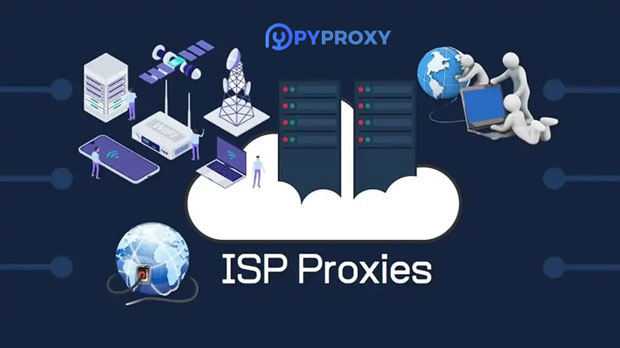In recent years, residential proxies have gained popularity for various online activities, including bypassing geographical restrictions, masking IP addresses, and enabling anonymity. However, their application in online exam systems has raised concerns. While these proxies may help candidates circumvent restrictions, they also introduce significant risks to the integrity and security of the online examination process. The use of residential proxies can lead to cheating, fraud, and unauthorized access, undermining the reliability of online assessments. Understanding Residential ProxiesBefore delving into the risks, it is essential to understand what residential proxies are and how they function. A residential proxy is an intermediary server that uses an IP address associated with a real residential device rather than a data center. This makes it harder for websites and online platforms to detect and block the proxy users. Residential proxies are often used to mask the user's real IP address, enabling anonymity and the ability to bypass certain restrictions, such as location-based access controls.While residential proxies can be used for legitimate purposes such as protecting privacy or accessing restricted content, they also present serious challenges when applied in sensitive environments like online exam systems. These challenges stem from the fact that proxies can disguise the user's true location and identity, making it difficult to ensure that the person taking the exam is the intended candidate.Risks of Proxy Use in Online Exam Systems1. Risk of Cheating and Academic DishonestyOne of the primary risks of using residential proxies in online exam systems is the potential for cheating and academic dishonesty. Students may use proxies to bypass authentication systems, allowing them to take exams on behalf of others or access unauthorized resources during the exam. Since the proxy hides the real IP address and location of the user, it becomes difficult for exam administrators to track suspicious behavior or identify when a person is violating exam rules.Moreover, using residential proxies can enable students to access online tools, such as search engines, answer databases, or even communicate with others during the exam. This not only undermines the integrity of the exam but also compromises the credibility of the entire assessment process.2. Undermining Security ProtocolsOnline exam systems are typically equipped with advanced security measures to prevent cheating, such as browser lockdowns, video surveillance, and facial recognition. However, the use of residential proxies can bypass many of these security protocols, making it easier for malicious actors to exploit vulnerabilities in the system.For instance, if a proxy service is used to access the exam platform, the system might fail to detect suspicious activity due to the use of a legitimate-looking residential IP address. This can result in compromised exam security, as attackers can manipulate their online identity and location without raising red flags.3. Impairment of Proctoring and Monitoring SystemsOnline exam proctoring and monitoring systems play a critical role in ensuring that candidates follow exam rules and regulations. These systems typically use various methods, including webcam monitoring, keystroke tracking, and behavior analysis, to detect cheating.However, residential proxies can disrupt these monitoring systems by masking the candidate’s actual location and device information. This can create a false sense of security, leading proctors to believe that the candidate is taking the exam from a legitimate and authorized location. As a result, unauthorized activities may go undetected, jeopardizing the fairness of the examination.4. Potential for Account and System CompromiseThe use of residential proxies in online exam systems not only exposes the exam process to cheating but also increases the risk of account compromise. Cybercriminals may exploit proxies to gain unauthorized access to student accounts, either by stealing login credentials or by using sophisticated methods to bypass security protocols.In some cases, hackers may use proxies to flood the system with fake requests, leading to server overloads or data breaches. Such attacks can disrupt the smooth operation of the exam platform, resulting in delays, system crashes, or loss of critical exam data. This can have severe consequences for both students and institutions, leading to delays in exam results, reputational damage, and potential legal liabilities.5. Impact on Data PrivacyResidential proxies also pose significant risks to data privacy. Online exam platforms often collect sensitive personal information from candidates, including names, addresses, and payment details. When proxies are used, it becomes challenging to ensure that the data is being transmitted securely, as the proxy server may intercept or manipulate the information.This raises concerns about data theft, unauthorized access, and the potential misuse of personal information. If residential proxies are not adequately monitored or controlled, they can expose sensitive data to cybercriminals, putting both the candidates and the educational institution at risk.6. Legal and Ethical ImplicationsThe use of residential proxies in online exam systems can also have significant legal and ethical implications. Institutions may be held liable for failing to detect and prevent cheating, which could result in academic misconduct and legal disputes. In addition, students caught using proxies to cheat may face disciplinary actions, including expulsion or revocation of their degrees.Furthermore, if a proxy service is used to access exams from restricted regions or manipulate exam outcomes, it could violate terms of service agreements and breach laws governing online exams and educational integrity. This could lead to legal consequences for both the students and the institutions involved.Mitigating the Risks of Residential ProxiesGiven the risks associated with residential proxies in online exam systems, institutions must take proactive measures to mitigate these threats. Some of the strategies to minimize the use of proxies and protect exam integrity include:1. Advanced Detection Systems: Implementing advanced proxy detection systems that can identify suspicious traffic and flag potential proxy use. These systems can analyze IP address patterns, device fingerprinting, and behavioral analytics to detect anomalies.2. Multi-Factor Authentication: Introducing additional layers of authentication, such as biometrics or two-factor authentication, can help verify the identity of the candidate and reduce the likelihood of impersonation.3. Proctoring Software: Using more robust proctoring software that monitors candidates more closely, including continuous facial recognition and behavior analysis, can make it harder for candidates to cheat.4. Education and Awareness: Institutions should educate students about the consequences of using proxies to cheat and emphasize the importance of academic integrity. This can deter students from attempting to circumvent the system.While residential proxies have legitimate applications, their use in online exam systems presents a host of risks that undermine the integrity and security of the examination process. From facilitating cheating and academic dishonesty to compromising security protocols and data privacy, the potential dangers are significant. To protect the fairness and reliability of online exams, institutions must adopt comprehensive strategies to detect and prevent proxy use. By doing so, they can ensure that exams are conducted fairly and securely, upholding the trust and credibility of the online education system.
Jun 20, 2025



































































